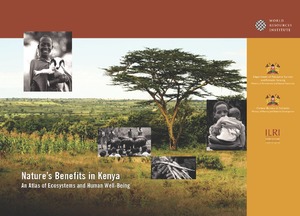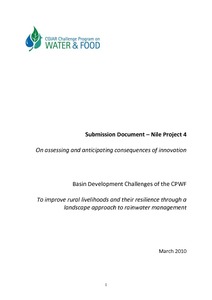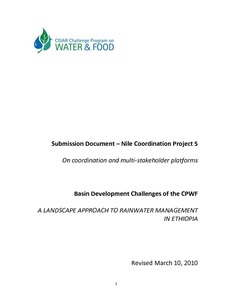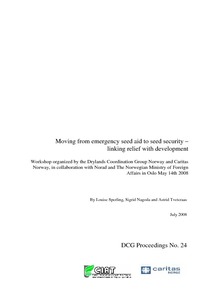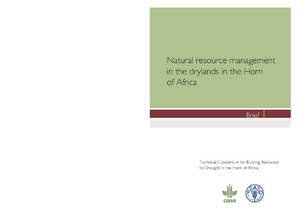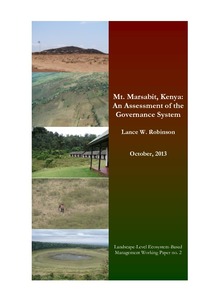rangelands
AGROVOC URI: http://aims.fao.org/aos/agrovoc/c_6448
Modeling potential livestock losses and vulnerability due to drought in the IGAD region
N3: On targeting and scaling out
This project is about matching technologies (or whole strategies) with environments. It has been shown that “blanket” RMS are often inappropriate. One size does not, as they say, fit all. Strategies for upper slopes are likely to be different than those for lower slopes.
Most Significant Change Stories from the Challenge Program on Water and Food (CPWF)
The following stories were collected from CPWF project and theme leaders in two rounds. The first round of stories were collected in January 2007 based on the following two questions:
What has been the most significant technical development or advance made by your 1) CPWF project / theme / basin since the start?
What has been the most significant partnership change (significant in terms of making 2) scientific progress and/or developmental impact more likely) that has taken place since the start of your CPWF project (or theme or basin)?
Nature's benefits in Kenya. An atlas of ecosystems and human well-being
This report provides a new approach to integrating spatial data on poverty and ecosystems in Kenya. It is endorsed by five permanent secretaries in Kenya and with a foreword by Wangari Maathai (recipient of the 2004 Nobel Peace Prize). It provides a new approach to examining the links between ecosystem services (the benefits derived from nature) and the poor. Through a series of maps and analyses, the authors focus on the environmental resources most Kenyans rely on such as soil, water, forest, rangeland, livestock, and wildlife.
N4: On assessing and anticipating consequences of innovation
This project is about showing whether RMSs are effective. It will seek to quantify the consequences of improved RMS for community livelihoods, resource productivity, land quality, and downstream water quality and siltation. It will specifically measure the downstream, cross-scale consequences of successful innovation in the Ethiopian highlands.
This project will develop methods to anticipate ex ante the likely consequences of introducing improved RMS as well as monitoring and measuring these consequences ex post. Finally, it will introduce methods for adaptive management.
Most significant change stories from the Challenge Program on Water and Food (CPWF)
N5: On coordination and multi-stakeholder platforms
Agricultural intensification of rainfed agriculture (Demeke et al, 1996)– especially of the dominant crop-livestock systems in the Blue Nile basin, management of the natural resource base and poverty alleviation have long been the targets of a vast array of research and development initiatives in the region. Such efforts have ranged from those targeting specific biophysical aspects – crop, livestock or natural resource technologies, to those focused on policy issues to those with a more integrated and market oriented approach.






